Seminar By Dr Emmanuel DERIVERY (LMB-MRC, Cambridge, UK)
Synthetic design of membrane organizers to reconstitute cortical polarity
Joseph Watson1 ; Ariel Ben-Sasson2-4 ; David Baker2-4 and Emmanuel Derivery1
1MRC Laboratory of Molecular Biology, Francis Crick Avenue, Cambridge, UK. 2Department of Biochemistry, University of Washington, Seattle, Washington 98195, USA. 3Institute for Protein Design, University of Washington, Seattle, Washington 98195, USA. 4Howard Hughes Medical Institute, University of Washington, Seattle, Washington 98195, USA.
Polarized cells rely on a polarized cytoskeleton for polarized trafficking, spindle orientation and oriented migration. But while cytoskeleton remodeling machineries have been extensively characterized at the molecular level, how polarity signalling at the cell cortex translates to local or global cytoskeleton remodeling in the cytosol remains elusive. This is predominantly due to there being no amenable system to induce long term cortical polarity of specific signaling pathways in the absence of intrinsic polarity. Here, we developed a synthetic biology approach to reconstitute spontaneous symmetry breaking of the cell cortex in order to restore cortical polarity of any protein of interest within a population of naïve, unpolarized cells, both in interphase and during division. The interphase assay relies on advances in protein micropatterning technology, which allow us to simultaneously control cell shape, but also the localization of proteins at the cortex of these cells. Conversely, to reconstitute cortical polarity in dividing cells, we engineered a novel two-component 2D protein polymer, which has been specifically designed to cluster any transmembrane protein of interest into a polar cap, while blocking its endocytosis. Finally, I will discuss how these novel technologies can be used to reconstitute key features of asymmetric cell division in unpolarized cells.
References
Watson JL, Aich S, Oller-Salvia B, Drabek AA, Blacklow SC, Chin J and Derivery E*. High efficacy subcellular micropatterning of proteins using fibrinogen anchors. Journal of Cell Biology, 2021
Ben-Sasson AJ, Watson JL, Sheffler W, Johnson MC, Bittleston A, Somasundaram L, Decarreau J, Jiao F, Chen J, Mela I, Drabek AA, Jarrett SM, Blacklow SF, Kaminski CF, Hura GL, De Yoreo JJ, Ruohola-Baker H, Kollman JM, Derivery E*, and David Baker*. Biologically-active binary protein 2D materials. Nature, 2021


